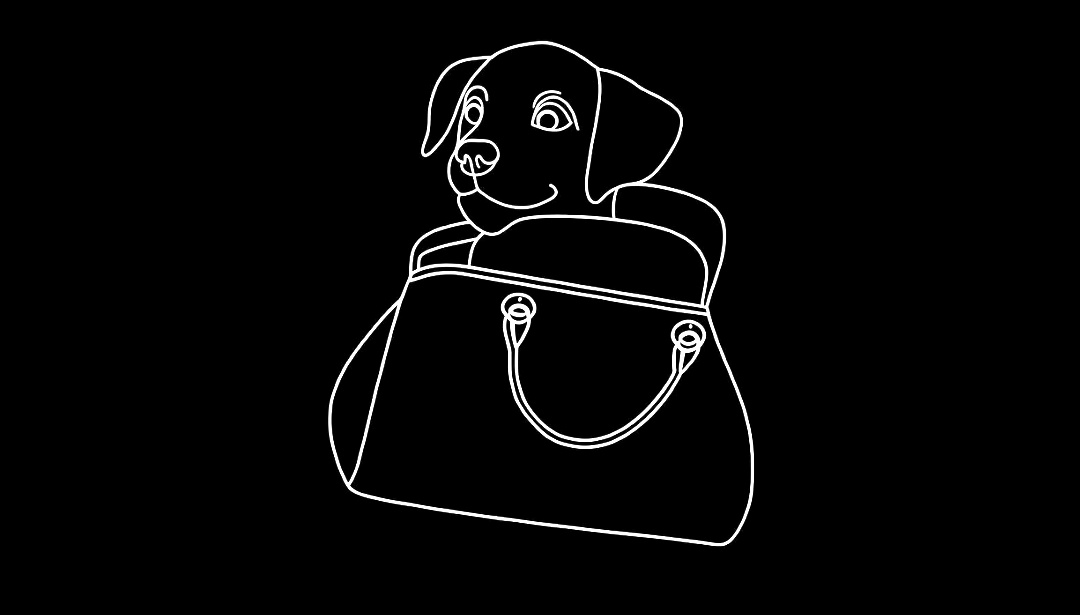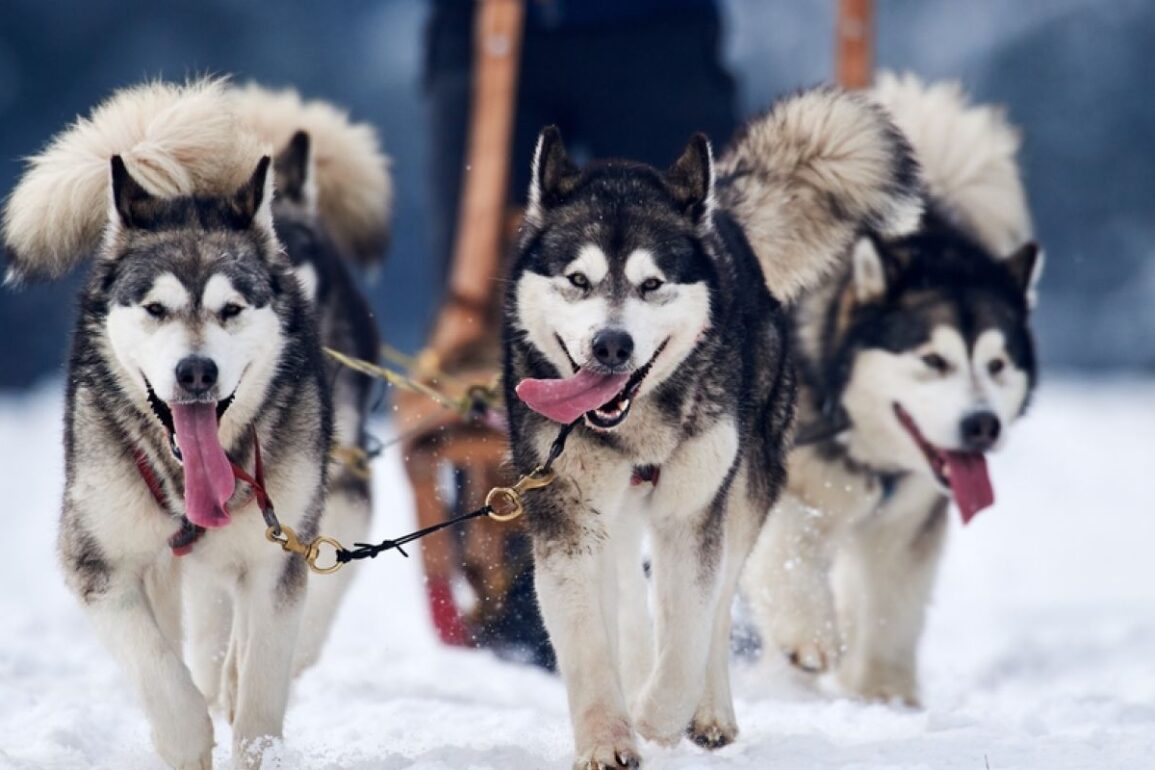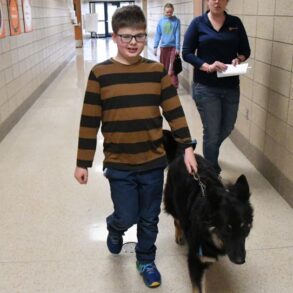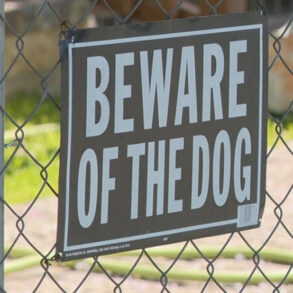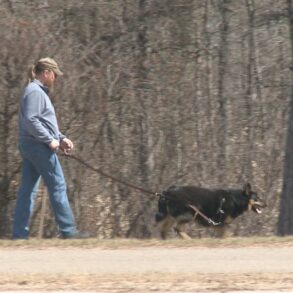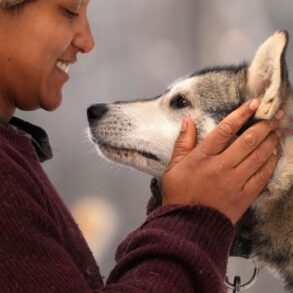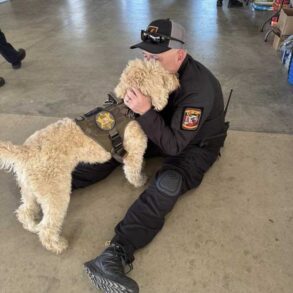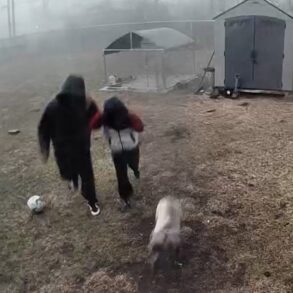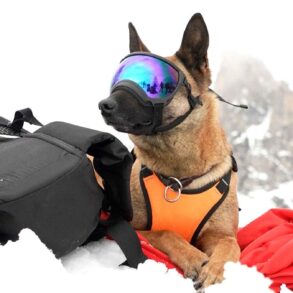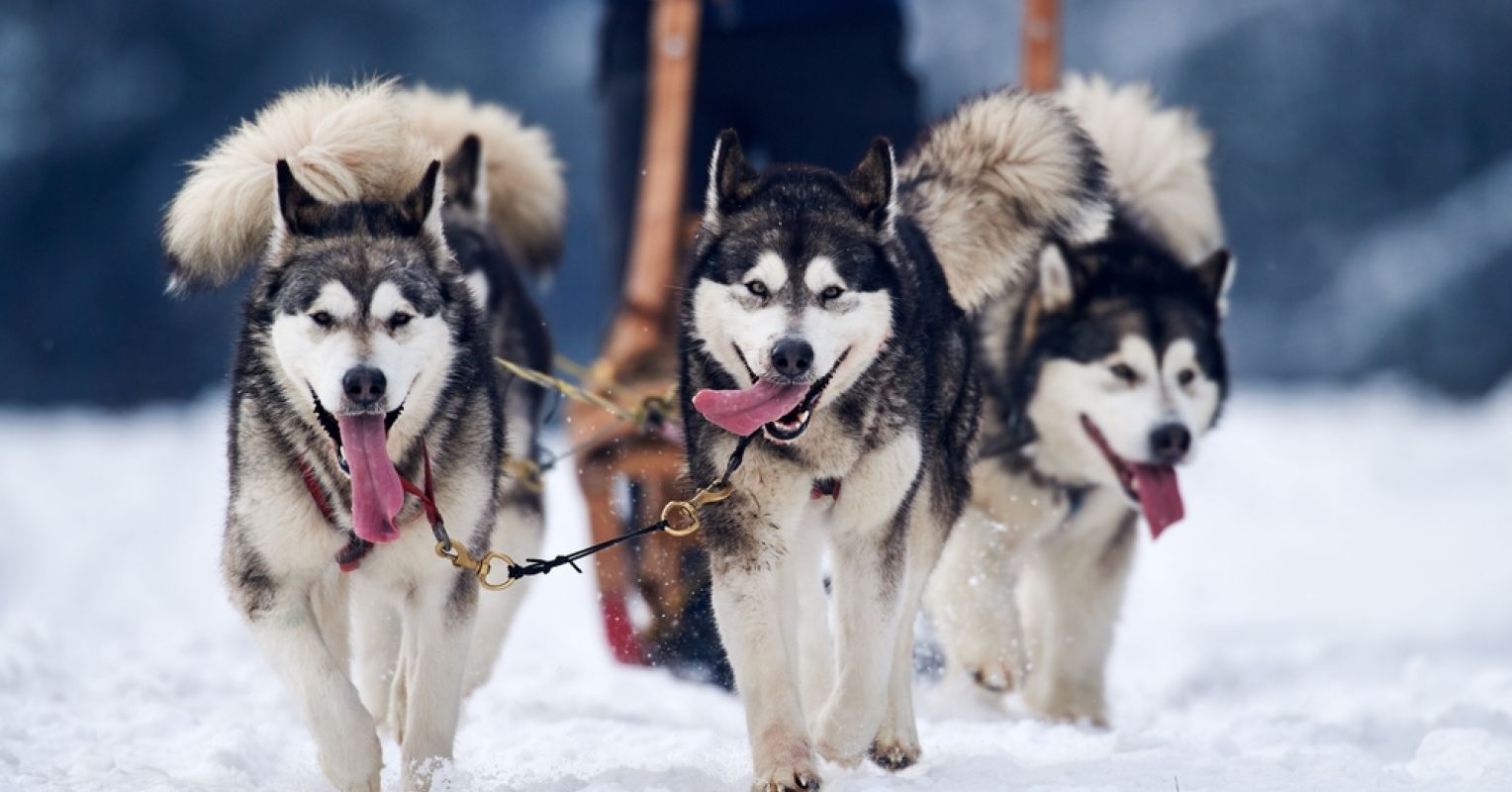
I was standing near the ice lanterns that lined the trail of a mid-distance sled dog race, watching teams trot by with a beautiful combination of determination and joy. It’s a mesmerizing sight—dogs and musher moving as one through a forest late at night, focused on the trail ahead. Spectators gathered around bonfires, ringing bells and cheering as the teams glide by.
But then, I saw something out of the ordinary.
We were cheering on an approaching team, the dogs barely visible from the rays of the musher’s headlamp. As they neared the crowd, the dogs headed off trail and right into the crowd of spectators.
The lead dog, a powerful and eager husky, had locked onto something in the periphery and taken the rest of the team with him. It happened so fast that the crowd barely had time to react. Spectators jumped back, and I braced for chaos.
But what happened next was a masterclass in self-regulation.
The Calm in the Chaos
The musher, standing firmly on the runners, didn’t panic. He didn’t yell. He didn’t jerk the sled or scramble to correct the team. Instead, in a calm, steady voice, he called out:
“I need a volunteer! Grab the lead dog’s harness!”
In the middle of swirling confusion, his voice was clear and direct—it had an instant calming effect on not just the dogs but on the crowd as well. A nearby volunteer reacted instantly, stepping forward and grabbing hold of the lead dog, gently guiding the team back onto the right path. Within seconds, the dogs were back on track, the energy reset, and the musher was moving forward as if nothing had happened. The crowd went back to warming hands around bonfires as we waited for the next team to appear out of the forest.
It was over in moments, but that experience stuck with me. What I witnessed wasn’t just skill—it was self-regulation in action.
Self-Regulation: The Invisible Edge
Self-regulation, in its simplest form, is the ability to manage emotions, thoughts, and actions—especially when things go sideways. It’s staying calm when adrenaline is screaming for action. It’s pausing to assess before reacting. And it’s having the presence of mind to make clear, intentional decisions when the stakes are high.
For mushers, this isn’t optional. Out on the trail—whether during a race or in the middle of a remote wilderness—losing control can have dangerous consequences. A musher who panics can inadvertently pass that energy to the dogs, creating even more chaos. But a musher who stays composed transmits that calm to the team, helping everyone reset and get back on track.
The Neuroscience Behind Staying Cool Under Pressure
When unexpected events happen, the brain’s amygdala kicks into high gear, flooding the body with adrenaline and triggering a fight-flight-or-freeze response. This reaction is great if you’re facing immediate physical danger, but it’s not so helpful when you need to think clearly and make quick, strategic decisions.
The musher I witnessed that day had mastered the ability to override that initial surge by engaging his prefrontal cortex—the part of the brain responsible for executive functions like decision-making, impulse control, and problem-solving. Instead of reacting emotionally, he responded with precision, regulating both his emotions and his actions.
Why Micro-Moments of Self-Regulation Matter
What struck me most wasn’t just the musher’s composure—it was how quickly he shifted from recognizing the problem to executing a solution. He didn’t waste time overanalyzing or assigning blame. He simply called for help, addressed the issue, and moved on.
These micro-moments of self-regulation—the decision to stay calm, the clarity to ask for help, the ability to reset the energy—are what build resilience over time. Psychologists know that resilience isn’t built in grand gestures. It’s built through countless small moments where you choose to recalibrate instead of react.
What High Achievers Can Learn from Mushers
If you’re a high-achiever—whether you’re leading a team, managing a household, or working toward ambitious goals—self-regulation is your superpower. The ability to stay calm, assess a situation, and pivot effectively when things go off course isn’t just a skill; it’s what separates those who succeed from those who get derailed.
Here’s how to strengthen your self-regulation muscle:
- Pause before reacting: When things go sideways, take a beat. Even a few seconds of conscious breathing can interrupt the automatic stress response and give your brain time to shift from reaction to response.
- Ask for help with clarity: Just like that musher calmly called for a volunteer, know when to ask for help—and be clear about what you need. Clarity in high-stakes moments prevents further confusion.
- Recalibrate and move on: Once the immediate situation is handled, don’t dwell on it. Refocus on the bigger picture and keep moving forward.
Steady on the Sled, Steady in Life
Watching that musher regain control of his team wasn’t just a reminder of what’s possible on the trail—it was a powerful analogy for life. Things will go off course. Distractions will pull you in directions you didn’t plan. But staying composed, recalibrating, and refocusing will always bring you back on track.
So, the next time life veers off course, remember: Call out for help, reset your energy, and trust yourself to keep moving forward.
This post was originally published on this site be sure to check out more of their content.
